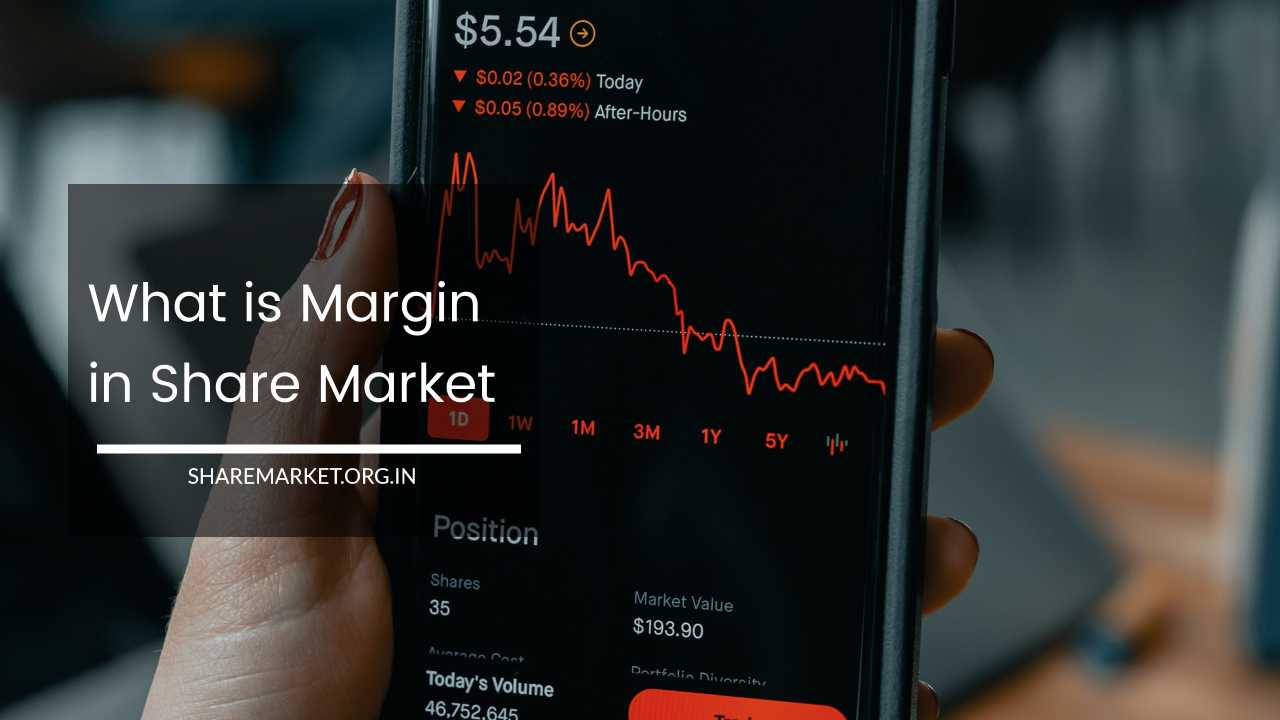What is Margin in Share Market

What is Margin in Share Market
What is Margin? Learn About Leveraged Investing
When a trader wishes to invest in financial assets such as stocks but lacks the necessary funds, they have the option to borrow money from their broker through a process called purchasing on margin.
This allows the trader to take a loan from the broker and engage in trading shares online.
The concept of margin funding, pledging of shares, and buying on margin comes into play in such scenarios. The trader places an order with the intention of capitalizing on the perceived price fluctuations of the stock.
This is especially useful when the trader does not have enough funds to directly purchase the asset.
In a margin position initiated by selecting ‘Margin Buy’, the trader anticipates that the stock price will move favorably in an upward direction. The trader can choose to square off the position within a specified time frame or at their discretion.
On the other hand, short-sellers typically utilize margin selling to execute their trades. They place “Margin sell” orders when they believe that the price of the financial security will decrease.
By leveraging their position, short-sellers can borrow more margin to engage in short selling. However, it’s important to note that every short-seller must eventually repurchase the equivalent amount of shares.
Purchasing on margin and engaging in margin selling are strategies that allow traders to participate in the market even when they do not possess the full funds required for investment.
However, it’s crucial for traders to carefully manage their margin positions, as they involve additional risks and obligations.
What is Margin Trading?
Margin trading is a trading strategy that allows individuals to potentially increase their investment returns by investing more money than they can afford.
It involves purchasing stocks at a marginal price, which is lower than the actual value of the stocks. Brokers play a crucial role in margin trading by providing investors with the necessary funds to make these stock purchases.
The borrowed funds are used to leverage the investor’s position in the market.
Margin trading offers investors the advantage of accessing higher capital for investment purposes. This increased capital allows them to take larger positions in the market, either through securities or cash.
By leveraging their position, investors have the potential to amplify their results, thereby increasing their potential profits on successful trades.
However, it’s important to note that margin trading carries inherent risks. Investors can only realize a profit if the total profit earned exceeds the borrowed margin.
If the market moves against the investor’s position, losses can accumulate quickly, and the investor may be required to repay the borrowed funds. This makes margin trading a strategy that requires careful consideration and risk management.
Investors engaging in margin trading should thoroughly understand the risks involved, closely monitor their positions, and have a clear plan in place for managing potential losses.
Margin trading can be a powerful tool for experienced investors who are able to effectively navigate the risks and make informed investment decisions.
Margin trading offers several advantages for investors, which can be summarized as follows:
Ideal for Short-Term Profit Generation
Margin trading is particularly beneficial for investors seeking to capitalize on short-term price fluctuations in the stock market when they don’t have sufficient cash on hand for investing.
It enables them to participate in potential profit opportunities that may arise in the short term.
Leverage Market Position
Margin trading allows investors to leverage their market position by borrowing funds from brokers.
This leverage enables investors to take larger positions in securities that are not from the derivatives sector, potentially magnifying their potential returns.
Maximize Returns
By using borrowed funds through margin trading, investors have the opportunity to maximize their rate of return on the capital they invest.
The increased capital allows them to take advantage of market opportunities that may yield higher profits.
Utilize Securities as Collateral
Investors can utilize the securities held in their Demat account or their investment portfolio as collateral for margin trading. This provides flexibility and allows investors to use their existing securities to access additional funds for trading.
Regulated under SEBI
Margin trading is regulated and monitored by stock exchanges and regulatory authorities such as the Securities and Exchange Board of India (SEBI).
This oversight ensures that margin trading is conducted within defined rules and safeguards, providing investors with a level of protection.
It’s important to note that margin trading carries inherent risks, and investors should exercise caution and proper risk management strategies.
Margin trading is most suitable for experienced investors who have a thorough understanding of the market and can make informed investment decisions.
Margin trading entails certain risks that investors should be aware of. These risks include:
High Risks
Margin trading involves borrowing funds to invest, which amplifies the potential losses. If the market moves against the investor’s position, they may end up losing more than their initial investment.
Minimum Balance Maintenance
Investors are required to maintain a minimum balance in their margin trading account at all times.
If the account balance falls below the required minimum, investors may be forced to deposit additional funds or sell off some of their stocks to meet the balance requirement.
Risks of Liquidation
Brokers have the authority to liquidate assets in the margin trading account to recover their losses if investors fail to fulfill their obligations under the margin trade agreement.
This can result in the forced sale of securities at potentially unfavorable prices.
However, investors can mitigate the risks associated with margin trading by following certain practices:
Timely Margin Settlement
Since margin trading involves borrowing funds, investors are charged interest on the borrowed amount.
To minimize interest costs, it is advisable for investors to settle their margin positions promptly and avoid accumulating a large interest burden.
Prudent Borrowing
Investors should exercise caution and refrain from borrowing the maximum amount allowed by their broker. It is important to assess market conditions and invest with confidence, considering the potential risks involved.
Adequate Cash Reserves
Margin trading can result in both significant profits and losses. Investors should ensure they have sufficient cash reserves to meet margin requirements in case the market moves unfavorably. This helps to avoid forced liquidation of assets and potential losses.
It is crucial for investors engaging in margin trading to understand these risks and employ risk management strategies such as setting stop-loss orders, diversifying their portfolio, and conducting thorough market research before making investment decisions.
To be eligible for margin trading and access the margin trading feature, investors need to meet certain requirements set by the broker. These requirements may vary among brokers, but generally include the following:
1. Margin Account (MTF)
Investors must have a margin account with the broker. This is a specialized account that allows investors to engage in margin trading.
2. Initial Deposit
When opening a margin account, investors are typically required to make an initial deposit, which serves as the minimum balance to activate the margin trading feature. The specific amount required as an initial deposit varies depending on the broker.
3. Minimum Balance Maintenance
Investors must maintain a minimum balance in their margin account at all times. This minimum balance requirement is set by the broker and serves as a safeguard against potential losses.
If the account balance falls below the specified minimum, the broker may issue a margin call, requiring the investor to deposit additional funds or sell off assets to meet the minimum balance.
4. Squaring-Off Position
At the end of each trading session, the broker may require the investor to square off their position if the minimum balance is not maintained.
Squaring off a position involves closing out all open margin positions to ensure compliance with the minimum balance requirement.
It is important for investors to carefully review the eligibility criteria and requirements set by their broker before engaging in margin trading.
Additionally, investors should consider their risk tolerance, financial situation, and market knowledge before deciding to participate in margin trading, as it involves higher risks compared to regular cash trading.

















